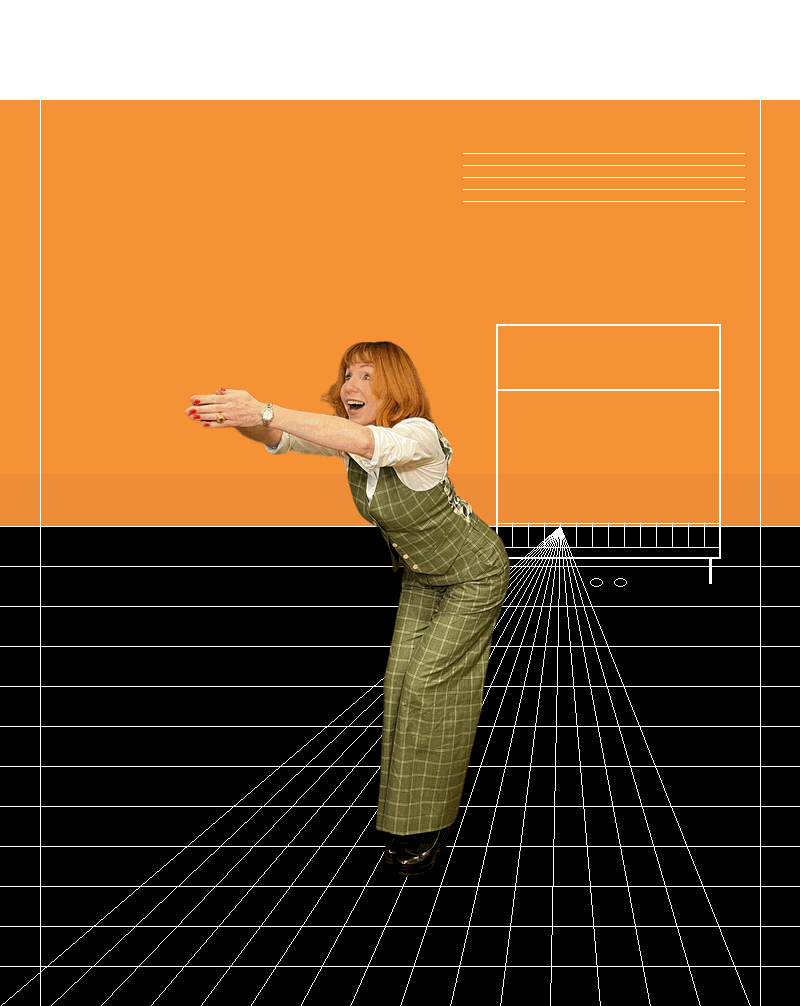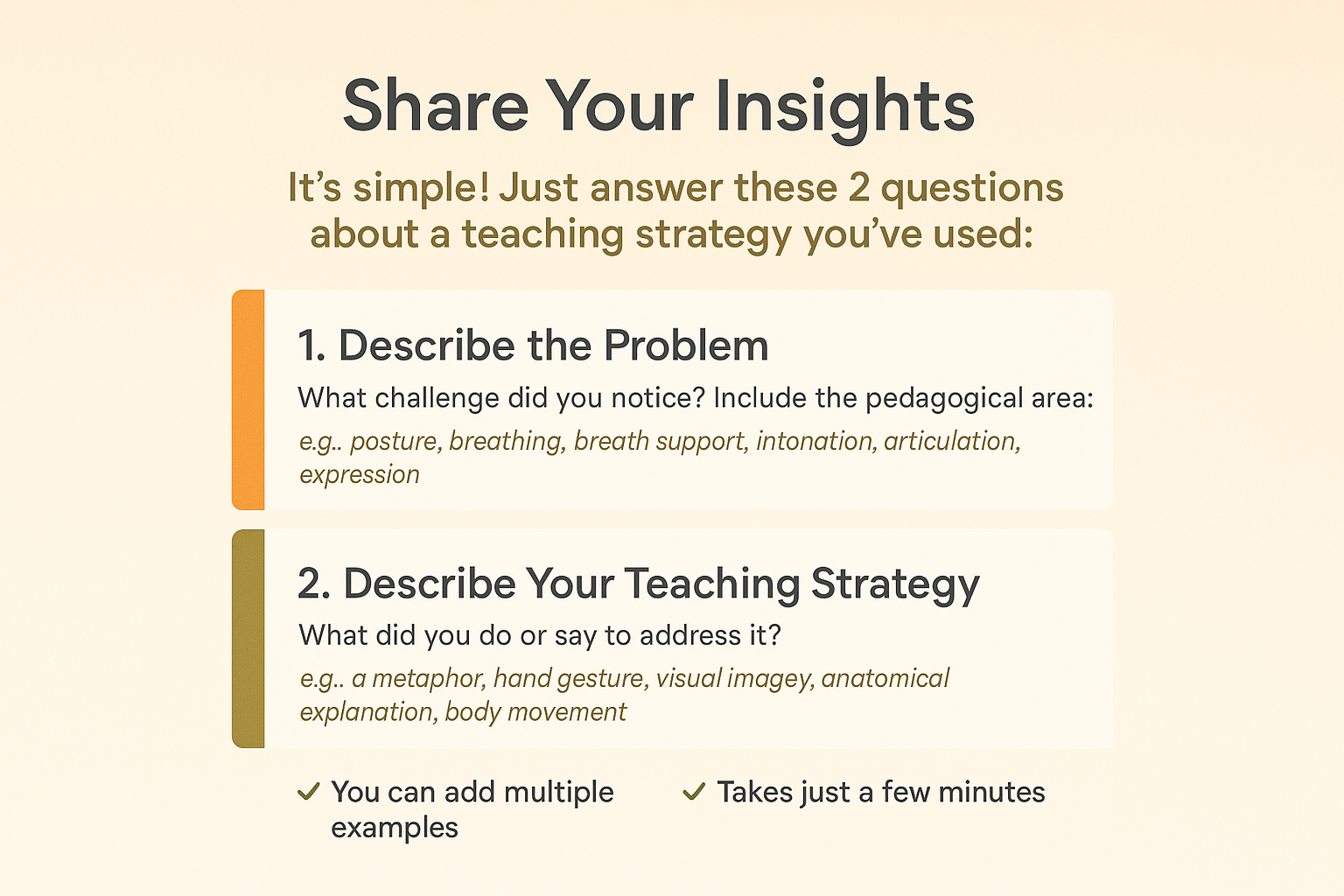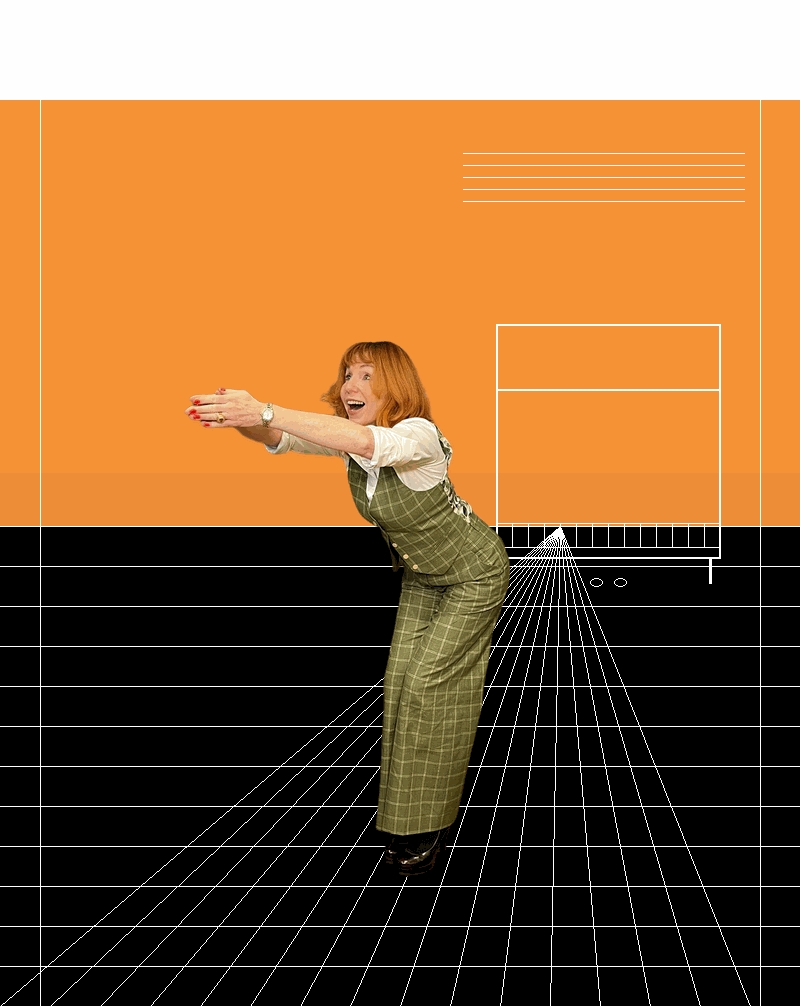Imagery in Singing Pedagogy: Experienced Teachers’ Perspectives
If you are a singing teacher visiting this page, thank you for considering participating in this research
The aim is to explore how experienced singing teachers use imagery in all its forms (visual, kinaesthetic, auditory and motor imagery) to achieve objective vocal outcomes in their students. The study is interested in how imagery can help bridge scientific understanding of the voice (breath, laryngeal function, resonance, etc.) with the subjective experience of singing. While there is some excellent research on imagery use in vocal pedagogy, there is limited evidence of in-practice teaching experiences which I feel, as a singing teacher, is really worth exploring.
I would therefore like to ask you to fill out the online questionnaire or to have a short interview with me, when you can decide how you would like your contribution to be credited. Essentially, I will be asking you to share an example or two of imagery, in any form, that you use for particular objectives in your practice.
This is an illustrative example drawn from my own practice:
Area of pedagogy: Breath management / navigating high notes / register changes
Problem: Student “pushes” air on high notes, causing excessive volume and undesirable register breaks. As vocal fold vibrational behaviours change on ascending pitches, air flow and pressure adjustments become necessary which may suggest that the singer needs to reduce air flow.
Strategy involves using visual imagery to develop a kinaesthetic sense of balancing appropriate air flow and pressure by blowing bubbles through a straw into a glass of water while humming on glides. The objective is to keep the bubbles the same size and ‘bubblyness’ as the student ascends in pitch. The hope is that they begin to demonstrate a growing sense of ‘how little’ air is required for higher notes.
Outcome: If successful, the student develops a long-term kinaesthetic sense of reducing air flow for high note singing while improving volume control and vocal health.
Please don’t worry if you are not really sure about the scientific explanation; singing is so unbelievably complex, it’s not surprising that we sometimes don’t know what or why just that ‘it’ works, so ‘it’ has value. Please think about asking your students if there is anything in particular that they have found helpful. I personally use a lot of hand gestures (much influenced by the Estill model) and metaphorical language, along with using spectography as a visual aid in pitch correction.
Thank you so much!
Survey deadline 22nd December 2025
The research submission deadline is April 2026. I will share the results of this study on this page following this.



